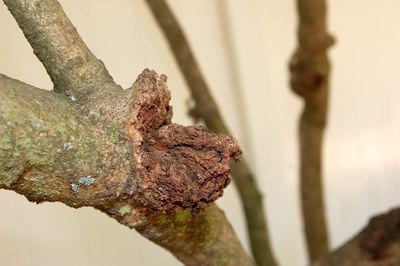What is Stem Canker of Gardenia?
Stem canker of gardenia is a problem caused by the fungus Phomopsis gardeniae. The cankers themselves begin as dark brown, oval shaped spots that run longitudinally (perpendicular with the ground) along the stem of the plant. Sometimes, these spots are sunken with a sharp edge. With time, the spots harden and crack open. On occasion, they form into galls, swollen areas on the stem. Gardenia stem galls are also symptoms of the Phomopsis fungus that develop when there are several cankers in the same spot. Gardenia stem canker and galls tend to appear at the base of the plant’s stem, near the soil line. The stem directly above the cankers and galls might change color from its usual light green to bright yellow. It’s also possible for these symptoms to be found on the plant’s leaves and roots. Canker and galls on gardenia stems cause the plant to become stunted and eventually die.
How to Treat Gardenia Stem Canker and Galls
The Phomopsis fungus enters gardenia plants through wounds in the tissue. Due to this, the best way to prevent gardenia stem galls and canker is to avoid damaging the plant. If any part of the plant becomes damaged, prune it away. Avoid stressing the plant by maintaining a steady water and feeding regimen. If a plant becomes infected, remove and destroy it. The fungus spreads through humidity and moisture and can survive the cold of winter inside the plant. Plant new gardenias in a different location.
